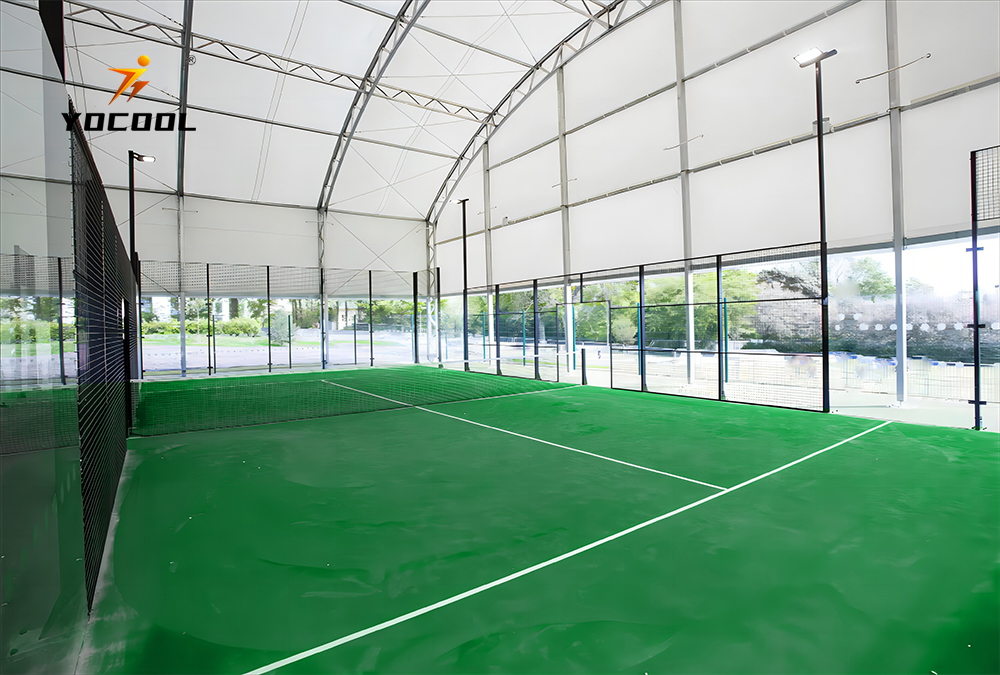

Understanding Padel Equipment Costs and Supplier Dynamics
Padel has seen a meteoric rise in popularity worldwide over recent years, evolving from a regional sport to a global phenomenon. With the influx of players and enthusiasts, the demand for padel equipment—specifically, paddles, balls, and apparel—has surged. This expected growth in demand raises an important question for players, clubs, and retailers alike what are the costs associated with padel equipment, and how do suppliers influence these costs?
Padel Equipment Costs
When considering the costs associated with padel, it is essential to recognize that various factors contribute to the overall expenditure. The primary components of padel equipment include paddles, balls, and other accessories such as bags and clothing. Each of these items has its own price range, influenced by quality, brand reputation, and material.
1. Paddles The cost of a padel paddle can vary significantly. Entry-level paddles typically range from $50 to $100. These are designed for beginners and casual players and are often made from less expensive materials. Mid-range paddles, which cater to more serious players looking for greater performance, generally cost between $100 and $250. At the high end, professional-grade paddles can exceed $250, often featuring advanced technologies and top-quality materials to enhance performance.
2. Balls Padel balls are specialized rubber balls similar to tennis balls but designed for the specific playing conditions of padel. A can of three padel balls usually costs between $5 and $15. For clubs and trainers, bulk purchases can drive costs down, but for individual players, the price remains relatively modest.
3. Accessories Additional costs include bags for carrying equipment, pads for wrist support, and appropriate footwear. Quality bags range from $30 to $150, while specialized padel shoes can range from $50 to $200. Apparel designed for comfort and performance can add another $30 to $100 to a player’s budget.
Supplier Dynamics

The role of suppliers in the padel market is fundamental, not only in terms of availability but also in determining the pricing dynamics of the equipment. Two main types of suppliers operate in this space manufacturers and distributors.
1. Manufacturers These are the companies that produce padel equipment. Renowned brands such as Bullpadel, Adidas, and Wilson invest significantly in research and development to create high-quality products that meet the demands of competitive players. The cost of manufacturing, including sourcing materials, labor, and technological innovations, ultimately impacts the retail price.
2. Distributors Distributors play a crucial role in getting padel equipment from manufacturers to retailers and consumers. They typically purchase large quantities from manufacturers, allowing them to negotiate better prices. Consequently, this can affect the final cost to the consumer. Local distributors may focus on regional markets and offer tailored services, while online distributors enable broader access, often leading to more competitive pricing due to lower overhead costs.
The Impact of Market Trends
The padel market is influenced by trends in both consumer behavior and technology. As player participation increases, suppliers respond by expanding their product lines and improving the quality of available equipment. Innovations such as lightweight materials, improved grip technologies, and custom designs have become significant factors in attracting players of all skill levels.
Moreover, the rise of online shopping has transformed sales channels, allowing consumers to compare prices easily and choose the best deals. This increased competition among suppliers pushes prices down, benefiting the end user.
Conclusion
In conclusion, the costs associated with padel equipment are determined by various factors, including the type of equipment, quality, and brand. Suppliers—both manufacturers and distributors—play a pivotal role in influencing prices through their operational strategies and market reach. As the popularity of padel continues to grow, it is critical for players to remain informed about options in the market to ensure they are equipped with the best gear for their needs. Ultimately, the balance between price, quality, and performance is what will continue to drive the dynamic padel equipment marketplace forward.
Industrial Flooring Solutions for Factories & Racquetball Courts Safe & Durable
Premium Rubber Floor Mats Slip-Resistant, Durable & Easy Clean
Industrial Flooring Solutions for Outdoor Paddle Tennis Courts & Factories
Industrial Flooring Solutions Durable Padel Court Supplier & Installation
Rubber Composite Flooring Durable, Slip-Resistant Floor Mats
Premium PVC & Rubber Sports Flooring Shock Absorption, Slip Resistance